In a country steeped in myth and legend, Wexford’s history is no exception.
Read further about the history of our beautiful town.
West Gate Heritage Centre
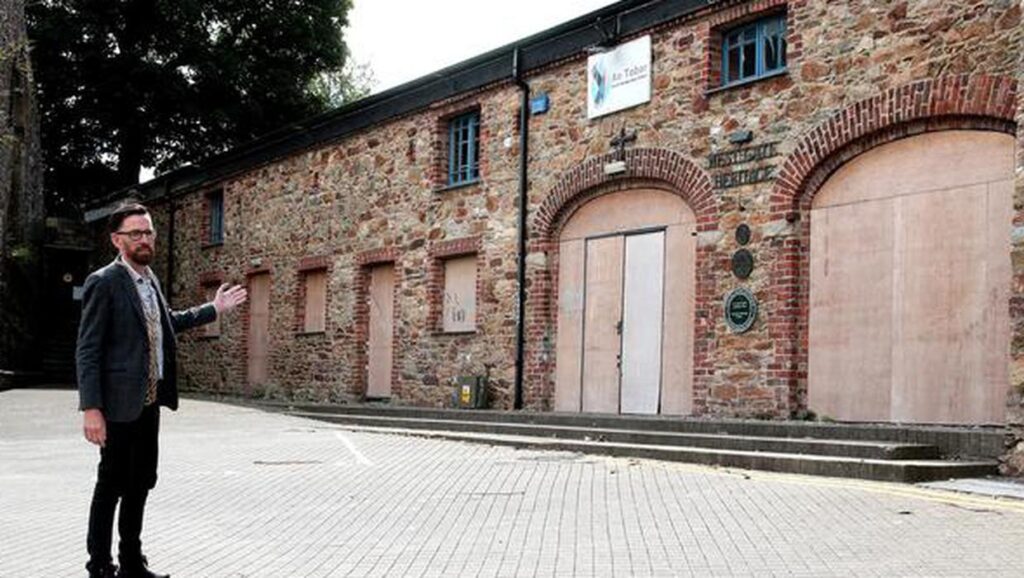
This tower once guarded the western entrance to the Selskar monastic precincts. It was built c.1300 by Sir Stephen Devereux. Like the other town gates, it consisted of a toll-taking area, cells for offenders and accommodation for guards.
Selskar Abbey
This is one of the oldest sites of worship in Wexford. An abbey was built on the site by Alexander Roche who, upon returning from the Crusades, was informed of the decision of his true love to enter a convent
believing him dead. The abbey, the tower of which still stands, was the site of synods and parliaments over the centuries. The roofless church is of much later construction.
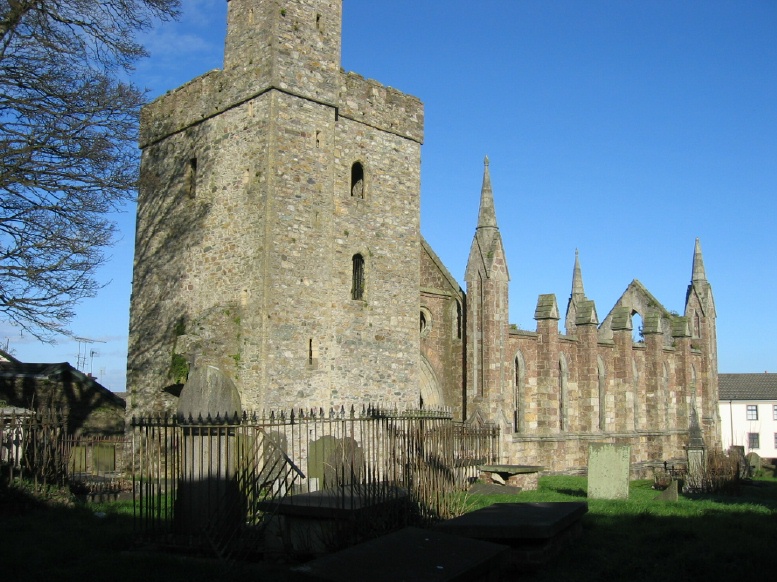
Cornmarket

The prehistoric market place building dates back to 1775. As the name suggests this was once the central market place of the town with its lower floor an open selling area. It has been a market area, dance venue, concert hall and Municipal offices. The Cornmarket is now home to Wexford Arts Centre and the new Wexford County Library close by in Mallin Street.
The Bullring
The Bullring got its present name from the medieval sport of Bull-baiting, introduced to the town by The Butchers’ Guild. From 1621 until 1770, bulls were baited twice a year and their hides presented to the Mayor. During the 1798 rebellion, the Bullring became an open-air factory, making and repairing pikes and other weapons for the insurgents. The Bullring has been the venue of many political rallies and protests: Daniel O’Connell, Charles Stewart Parnell, John Edward Redmond and Eamonn de Valera are among the many political figures who have addressed audiences in this historic square at the heart of Wexford. The Pikeman statue, sculpted in bronze by Oliver Sheppard, commemorates Wexford’s brave but failed
rebellion of 1798. It was unveiled in an elaborate ceremony attended by 30,000 people in 1905. In history of WEXFORD
2009, conservation works to the Pikeman statue took place. A re-construction of the Bullring was carried out as a 1798 bicentenary project and was officially opened by President Mary McAleese on 31st May, 1998. A ‘Tree of Liberty”, an Oak, was planted in the centre of the Bullring. Embedded in the ground behind the Pikeman statue is a ‘time capsule’ taking the form of a metal cylinder containing items reflective of Wexford life in
the bicentenary year. The limestone setts which sit on either side of the monument feature inscriptions relating to 1798, while bollards in the shape of cannonballs line the area. Extensive conservation and
repair work to the Market Place in the Bull Ring was carried out in 2008.
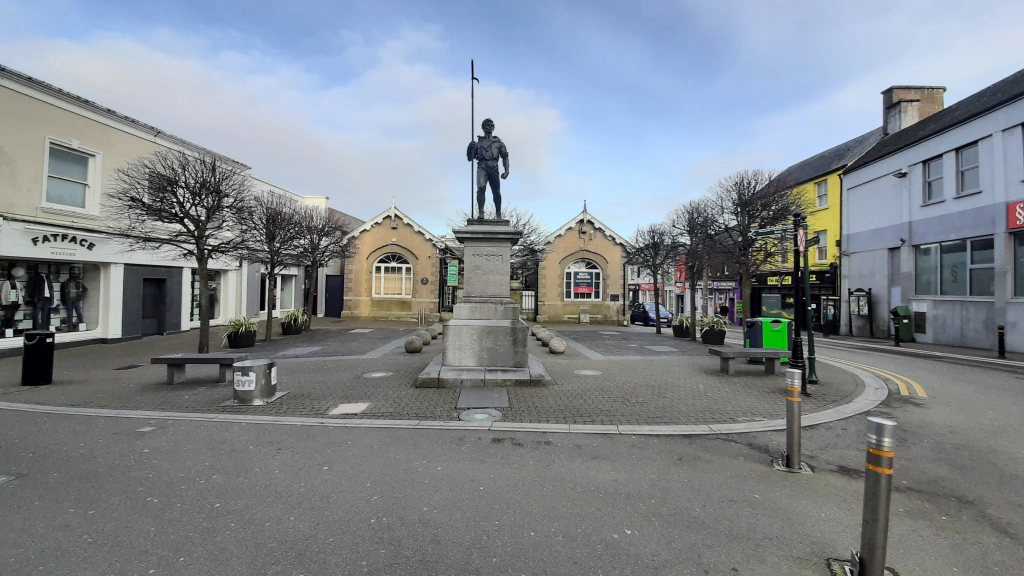
The Redmond Monument
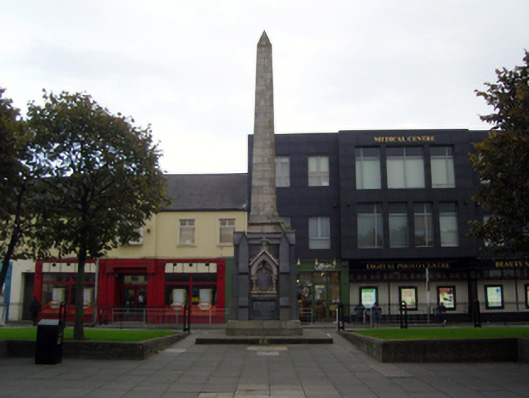
This monument commemorating the Redmond Family dominates Redmond Square at the Northern end of Wexford Town. The Redmond family was prominent in the business, social and political life of Wexford in the 19th century. They represented the town and county in Parliament, and also instigated the reclamation of great tracts of land including the very ground upon which Redmond Square stands. In 2007, following conservation and cleaning works to the monument, floodlighting was put in place to highlight the monument at night. Redmond Square, with its obelisk near the railway station, commemorates the elder John Edward Redmond (1806-1865) who was Liberal MP for the city of Wexford. The inscription reads: “My heart is with the city of Wexford. Nothing can extinguish that love but the cold soil of the grave.” Nearby a memorial commemorates the Wexford men who lost their lives in World War One.
County Hall
The imposing facade of the former headquarters of Wexford County Council was originally a gaol, built in 1812, with walls twenty feet high enclosing 58 cells and 16 exercising yards. Public executions took place on a green in front of the gaol until 1860. A memorial garden to the men executed during Irelands Civil War (1922-1923) is sited in the gaol’s graveyard.
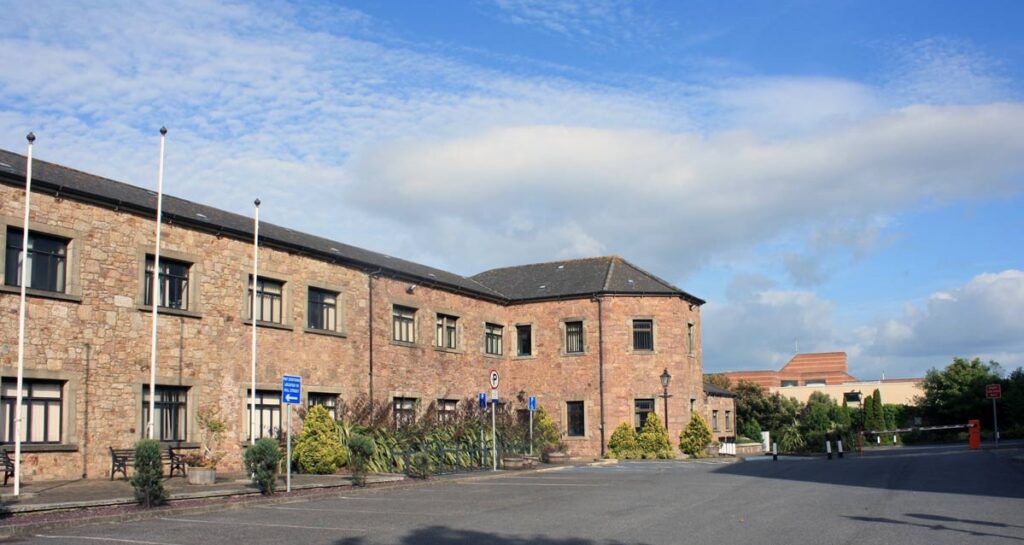
Wexford Quays
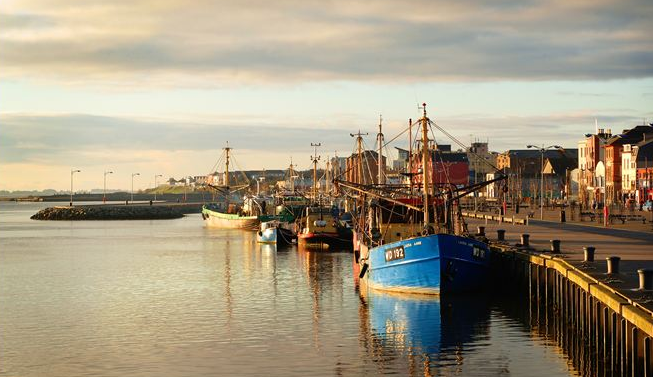
Wexford. Over the past thousand years they have extended from their original shoreline close to the present North Main Street. In September 2000, this progression continued with an extension width of 25 metres. A central decked area reminiscent of the old woodenworks of the 1870’s provides a pleasant area to stroll. An inner cobbled area with seating, is the perfect place to relax and enjoy the view of the River Slaney.
Today Wexford Quay is home to a fleet of commercial mussel harvesters.
Crescent Quay
The Crescent Quay of today is the former ‘Deep Pool’ of Wexford. It was here that deep water ships berthed. The present stone front which dates back to the early 1800’s extended the length of the quays until the railway arrived in 1880, and threw its viaduct across the mouth of the Crescent to carry the main line to the Rosslare-Europort. The bronze statue facing out to sea at Crescent Quay is that of Commodore John Barry, “Father of the American Navy”. Barry was born some miles outside Wexford town. The statue was a gift of the American people in 1956. U.S. Presidents Eisenhower and Kennedy are among the dignitaries who have laid wreaths here. In the days of sail up to one hundred vessels brought cargoes of superb Co. Wexford malting barley across the Mediterranean, through the
Black Sea as far as Odessa and Galati on the Danube. Behind John Barry is the Old Ballast Office. It was from this building for many decades, that the Wexford
Harbour Commissioners oversaw the smooth running of the busy port which traded with many parts of the world. A reminder of our nautical past is to be found in the quay bollards and the window sills to the side of the building where sailors sharpening their knives made unintentional sculptures in the soft stone.
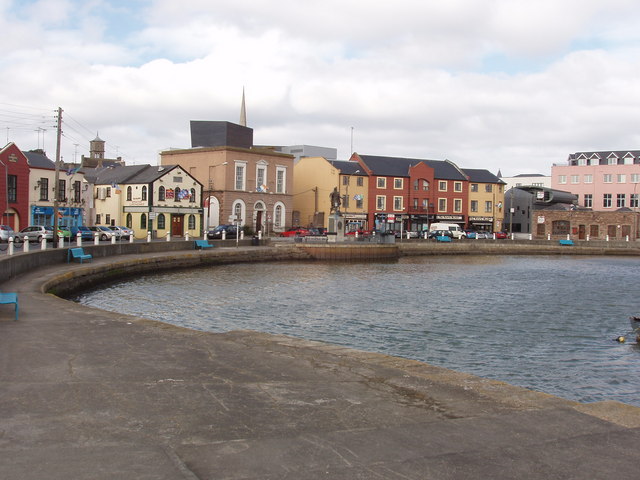
The Ballast Bank
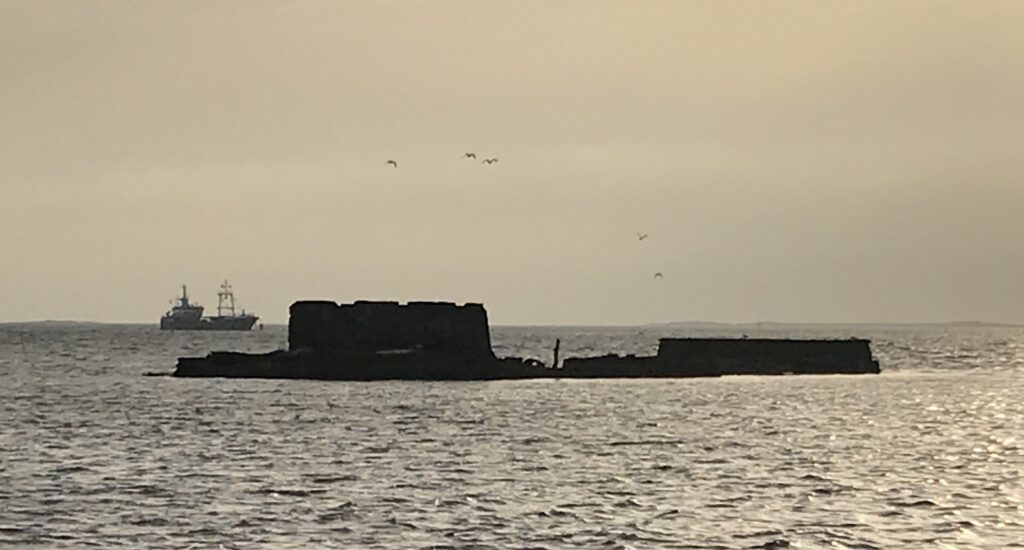
The unusual rock foundation island which can be seen from the quays is the ballast bank. It was a place where ships entering or leaving the port could take on or off-load their ballast of sand or stones which
they needed to remain stable at sea while travelling without cargo
The Main Street
Wexford’s Main Street, the principal shopping area, is a unique reminder of Wexford’s heritage. Its narrow, irregular paths developed from market trails between the Gaelic municipality to the north and the Norse to the south. It gives local people and visitors a taste of
the friendly intimacy of this ancient town.
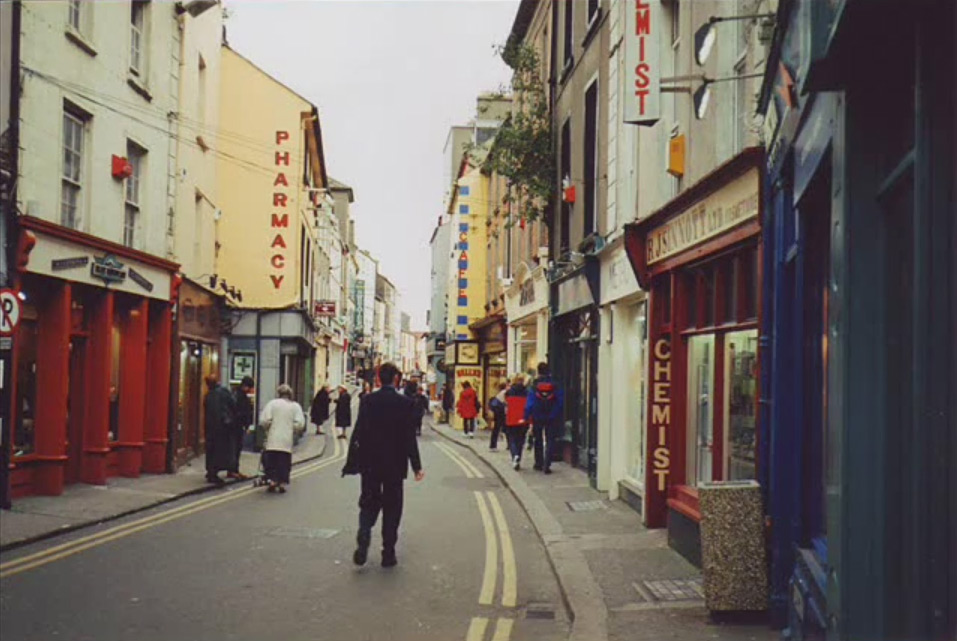
St Iberius Church, Main Street
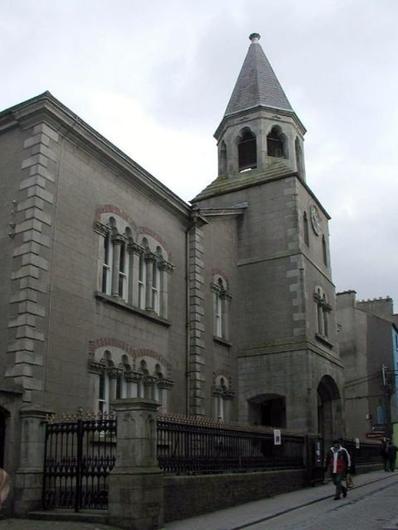
Saint Iberius Church of Ireland is situated on the site of the early Christian missionary Iubhars’ church. The name Iberius is used in other forms such as Saint Ibar or St. Ivers. The present building was built in the 18th century and features a late-Georgian style interior and 19th-century Venetian Renaissance exterior. This building contains memorials to several notable Wexford people
The National Opera House
This venue in High Street is the headquarters of the world renowned international Wexford Festival Opera. The original theatre opened in January 1832. In 2006, it closed its doors to undergo a major reconstruction which took just over 2 years to complete. On Friday 5th, September 2008. The National Opera House was officially opened by An Taoiseach, Brian Cowen. This was a historic moment for Wexford and for Ireland. This impressive, landmark building (and Ireland’s first custom-built Opera House) was designed and project-managed by the Office of Public Works. This skyline changing building hosts a multitude of events all year round of theatre, dance, concerts and other events in addition to the Wexford Festival Opera.

Twin Churches
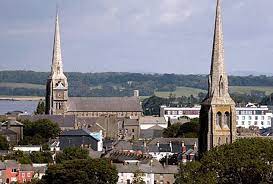
Dominating the skyline of Wexford, are the Twin Churches (the Church of the Immaculate Conception, Rowe Street and The Church of the Assumption, Bride Street). These two churches built between
1851 and 1858 just after the Great Famine are a monument to the devotion of Wexford people and the determination of Father James Roche who saw them to completion. An interesting feature at the main door of both churches is the cobbled mosaic showing relevant names and dates.
Franciscan Friary
The Franciscans are the longest established religious order in Wexford, having first come c.1240. Since then they have attended to the spiritual needs of the town through good times and bad. For many years, theirs was the only Catholic Church. It was outside the walls of Wexford town. Friars were among the victims of Cromwellian soldiers in 1649. The grounds of the Church were the venue of huge Temperance rallies in the 1840’s. One of the features of the Friary Church is the effigy of the young boy St. Adjutor, Roman martyr. This lifelike figure shows the wounds inflicted by the youth’s father. It is a much visited shrine.
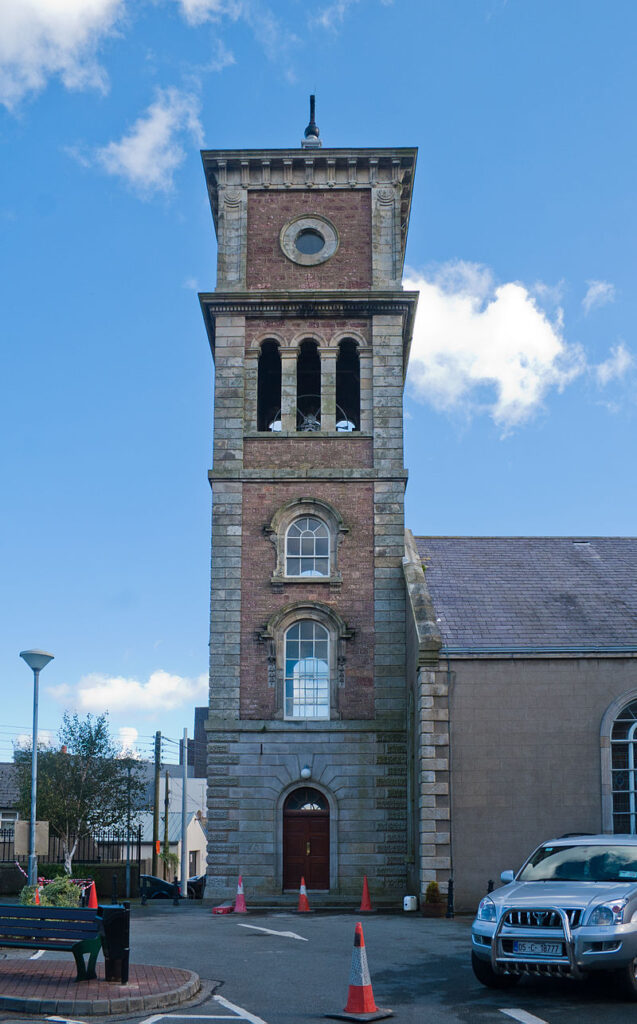
The Knights Hospitallers, St. Johns Gate Street
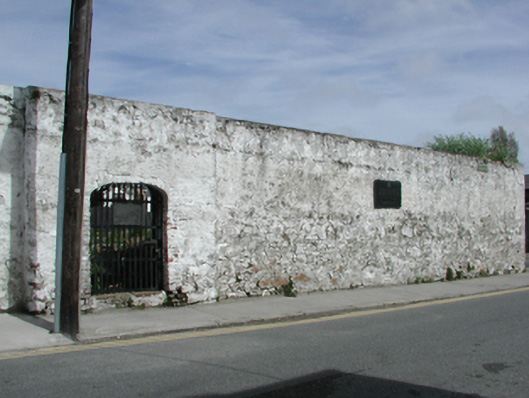
The remains of the Knights Hospital and Church of that militant Church Order contains the graves of interesting Wexford citizens, including the tomb of John Edward Redmond M.P. the leader of the
Irish Nationalist Party in Westminster and his family. Nearby is the birthplace of the great revivalist of the Irish Ireland movement Robert Brennan, later head
of Ireland’s Diplomatic Corps in wartime Washington. His memorial is framed by the old town wall in Abbey Street. His daughter was the famed writer, Maeve Brennan of the New Yorker. Redmond Park, Spawell Road, is a delightful park dedicated to the memory of Major William Redmond where a fine memorial was completed on the centenary of his death in 1917 in World War One

